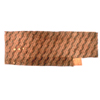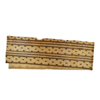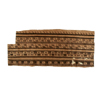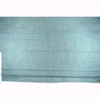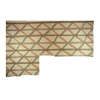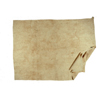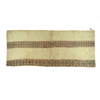Kapa is the Hawaiian term for barkcloth, more commonly known as “tapa.” While many Pacific Island cultures produced barkcloth, (pre-contact) Hawaiians developed distinct innovations, such as the watermark produced during the final stage of beating.
Kapa was generally made from the white inner bark of the wauke or paper mulberry tree (Broussonetia papyrus). It can also be made from the inner bark of mamaki tree (Pipturus albidus), the fibers of mai‘a (banana plant), ma‘aloa or ‘oloa (Nerudia melastomifolia) as well as other varieties of wauke. While kapa was not the only source of pre-contact clothing, it was the most common and versatile, in addition to being visually stunning.
Note:
Only cultural objects with photos available are shown on this page.
To see a full list of all cultural objects of this type, click
here.

